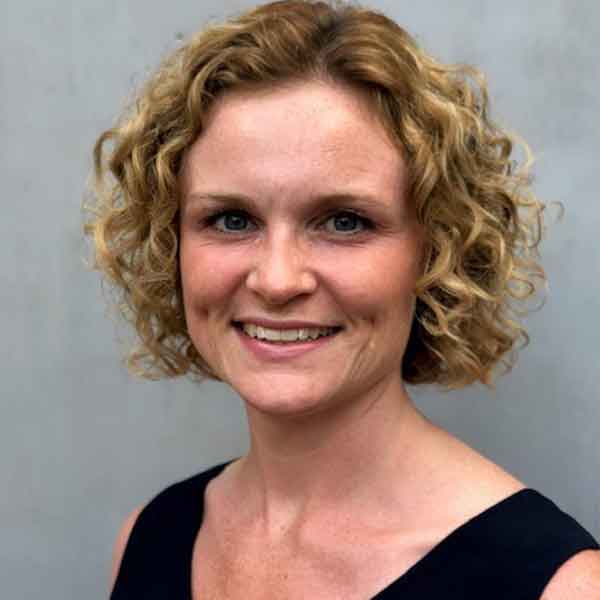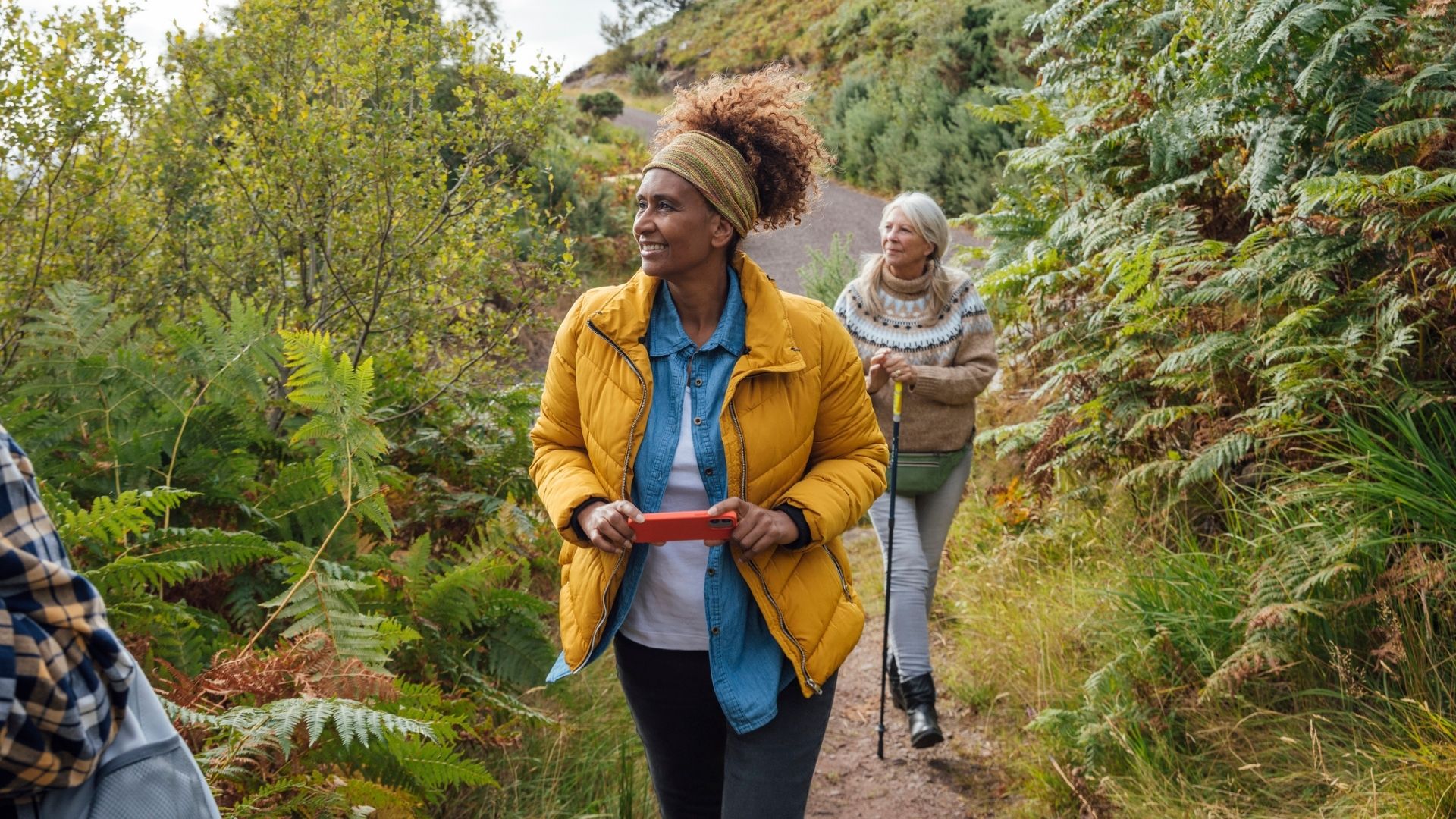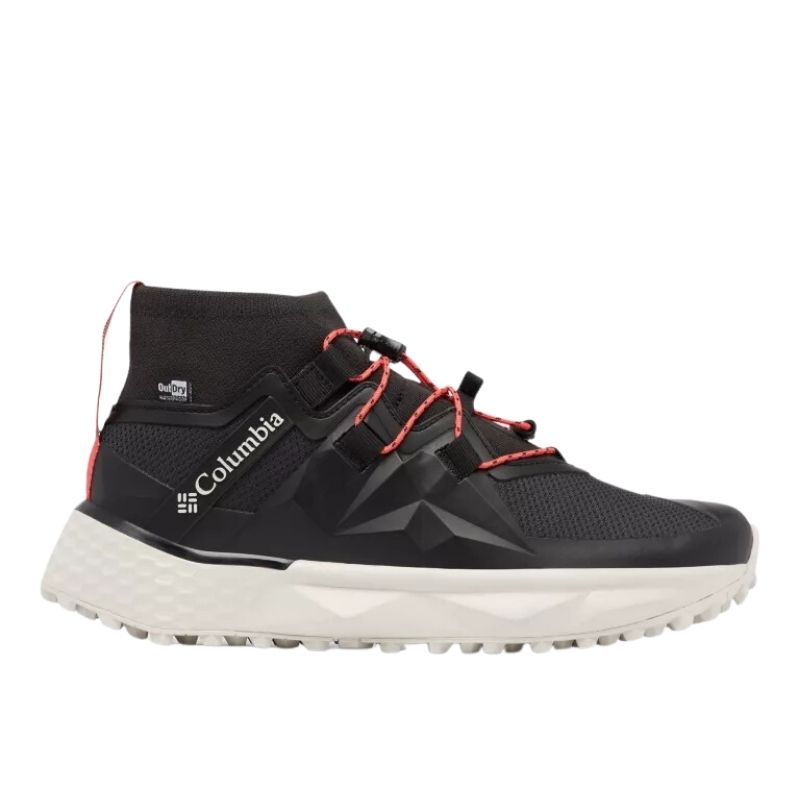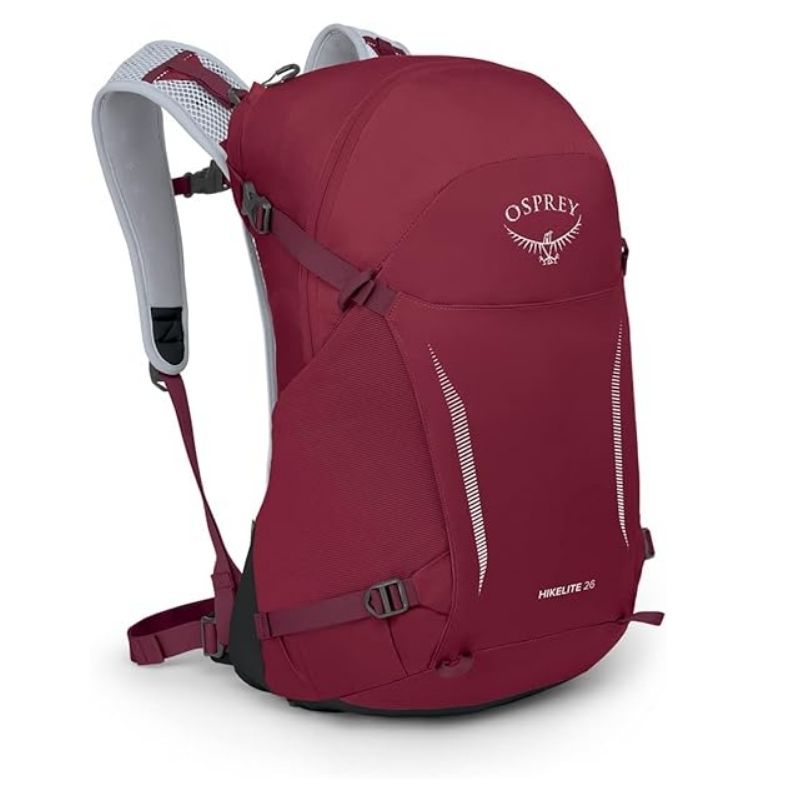'Rucking' is the fitness trend that could give your walking routine a boost - here's how to do it right
Rucking is a fitness trend that can challenge your regular walking routine - here, personal trainers and physiotherapists explain how and why you should try it


If walking is how you like to exercise, then rucking is the perfect fitness trend for you. While not all fitness trends should have a place in our workout routines, rucking is a simple way to make walking and hiking slightly more challenging with more benefits to enjoy.
Walking by itself is a great full-body exercise, boosting your cardiovascular health and endurance with every step. However, if you've been walking for a while or live somewhere without much uphill opportunity, you can get used to it pretty quickly and the positive impact on your body can start to wane.
To get back on track with walking as a workout, give rucking a go. Here, woman&home speaks to certified fitness experts, personal trainers, and physiotherapists to reveal all you need to know before pulling on your pick of the best hiking sandals or walking shoes.
What is rucking?
Rucking is a weighted walk using a backpack, explains Olivia Tyler, a personal trainer and the national fitness assurance lead at Nuffield Health. "It works by increasing the intensity of your walk and helps to build strength and endurance."
It may be the fitness trend of the moment but rucking, much like other workouts that have picked up on social media over the last few years (looking at you, 12-3-30 workout), has been around for years. In this case, the exercise comes from the military and is used as a way to build mental and physical endurance in the real world.
In many ways, rucking is similar to a classic weighted workout, Tyler adds. "This is when someone completes bodyweight exercises, such as pull-ups and squats while adding additional weight through a vest that they wear on their upper body."
There are a couple of differences between rucking and bodyweight workouts though; the main one being that rucking is more accessible. Whether you have a specially designed rucking backpack, a standard walking backpack, or just a lifestyle pack, you can do this activity. You can also fill your pack with disc weights specifically designed for strength training workouts, purchased from Amazon or similar, or you can fill your pack up with weights from around your house - such as cans of food from the cupboard.
Sign up for the woman&home newsletter
Sign up to our free daily email for the latest royal and entertainment news, interesting opinion, expert advice on styling and beauty trends, and no-nonsense guides to the health and wellness questions you want answered.
For those who enjoy walking every day and want to take things up a level without changing their route, rucking could be for you. Here, the experts explain why.

Olivia Tyler is BACPR qualified (cardiac rehabilitation) and her specialist interests are in connected health and communicating its benefits. As Nuffield Health's national fitness assurance lead, she works to ensure quality assurance across the rehabilitation programmes and offers support to rehabilitation specialists. In previous roles, she worked as a Fitness Presenter for NH 24/7 and as a Fitness Manager.
Is rucking good for your body?
1. Rucking is a type of strength training
If it's not already, strength training should be essential in your workout routine - even if you only do it once a week. As physiotherapist Joanne Fidock explains, "Weight-bearing exercises stimulate bone growth and density, which is particularly important for preventing osteoporosis."
For those experiencing or set to experience the symptoms of menopause, it's particularly important. As we get older, we naturally start to lose muscle and bone mass, which can be detrimental to movement later in life. Strength training, along with plenty of protein in our diets, helps to maintain it.
And rucking, says Tyler, is an easy way to start strength training for beginners. "It adds easy resistance to your workout when you're short on equipment or doing a home workout."

Joanne Fidock has been a physiotherapist since 2007 and now specialises in musculoskeletal and women’s health. She has a strong interest in the use of exercise for the treatment and prevention of injury and has worked across various settings in the NHS before joining Nuffield Health in 2011. Jo now works as a senior physiotherapist and is the regional physiotherapy lead for the south region.
2. It can help you enjoy nature
The great thing about rucking is that you can do it indoors on a treadmill or outside, it's entirely up to you. Most people will take rucking outdoors though, as you can store other essentials in your backpack for the walk apart from weights.
"If you're rucking, you can be outside enjoying nature while completing a higher-intensity walk and improving your aerobic capacity or VO2 Max as well as your balance," says Tyler.
You'll also be able to get plenty of fresh air, which has so many mental and physical benefits, says Fidock, who also works with Nuffield Health. "Any form of exercise has been shown to enhance overall mental wellbeing by reducing stress and improving overall mood," she adds.

3. It can help improve your posture
One benefit of strength training routines we often forget about is the impact they can have on our posture. "Rucking helps to encourage better posture as you are carrying weights on your back, which means you have to engage your core and back muscles," says Tyler.
This isn't only important for building up your posture but it can help you out in everyday life too. "Weighted walking makes it easier to perform everyday activities such as lifting and carrying," says Fidock, as these often need more core mobility and strength than we think. It's one reason why ankle weights are also very popular.
When rucking, it's important to be aware of this added tension so be sure to avoid going too heavy too early on, especially if you haven't done much strength training before.
4. Rucking is easy and accessible
As noted, rucking is one of the more accessible ways to push yourself during exercise. Chances are, you have everything you need already to do the workout. Plus, as walking is a popular activity to begin with, you're likely to find like-minded people in your friendship group or family who want to do it with you.
"There are often rucking community groups so you can get to know new people and enjoy exercising with friends," says Tyler.
If you're planning on tackling more challenging terrains with your backpack and looking to get the most out of the activity, and you have the budget to do so, it's worth investing in a good pair of walking shoes and a supportive backpack. This will undoubtedly help lighten the load on your back and legs - figuratively speaking, of course.

Columbia's Facet™ 75 Alpha Outdry™ lightweight waterproof walking shoe is the perfect pick for rucking if you're looking to invest in a new pair. These shoes have a knitted collar and lace system to lock your foot into place, with a heel clip for comfort, offering support on any type of road or trail.

When you're piling in the weights, you don't want your backpack weighing you down. The Osprey Europe Hikelite 26 walking backpack is one of my favourites - it's lightweight with plenty of useful pockets both on the sites and inside the bag. Reliable and stylish, without any fuss - but note, you can only carry up to 9kg in this. For something a little more durable, try the Osprey Stratos 34 for up to 13kg.

Starting at 2.5kg each, these plates are a great place to start for rucking. Whilst they are designed for the gym or a home workout space, they are anti-slip with a lifetime guarantee and are 30mm in diameter, making them backpack friendly. Although, be sure to check the measurements of your bag before buying. Also available in 5kg and 10kg.
5. But weighted vests may be more comfortable
With all that said, it's clear rucking is a great exercise and very good for the body and mind. However, it's not for everyone.
"There are comfort differences between using backpacks versus a weighted vest, with research showing that weighted vests can help people exercise for longer durations as they are more comfortable," notes Dr Jenny Alexanders, also a physiotherapist and the senior clinical educator at Nuffield.
Also, she adds, if you have a prior history of ankle problems then it might not be the exercise for you. "Rucking can increase ground reaction forces during walking and with the highest impact in the ankles, mainly during the push off, it can cause a great ankle injury risk."
As always, consult your doctor if you have any concerns about taking on a new exercise or fitness routine.

Dr Jenny Alexanders PhD, MSc, BSc, MCSP has over 17 years working as a musculoskeletal physiotherapist as well as 15 years working as a senior academic and researcher within higher education. Jenny enjoys combining her clinical expertise with her research and scholarly activities to ensure that patients receive nothing but high-quality care. She works within the learning and development team at Nuffield Health as a clinical educator.
How much weight do you need for rucking?
How much weight you need in your backpack will be entirely dependent on a few factors, but mainly: your current fitness level, the incline of the walk you're planning on doing, and how much of a challenge you want the walk to be.
To figure out how much weight to use, first, work out if you can do the same walk without weights. "For rucking, make sure you are walking the distances without issue before starting to add weights into your route," suggests Tyler. "Once you are happy walking without the weights, add weights in the backpack gradually to avoid back injuries. Rucking is only good for your back when done properly and when weights are increased gradually over time."
For example, start with a 2kg weight in your bag and work up by 0.5kg every time you do the route. And remember, the higher the incline of the route, the harder it will be so on trails where you are planning to go uphill most of the time, consider using a lower weight to start with.
Tips for rucking
- Make sure your backpack fits well: As rucking is all about the bag, it needs to be one that fits well. "Ensure your backpack has two shoulder straps that fit well across your body to help distribute the load evenly," says Fidock.
- Choose your weight carefully: Whether your backpack weighs 2kg or 10kg, any amount of weight will offer an extra level to your walk, so make sure you choose a comfortable one for you. "Ensure that the weight of your backpack is manageable for you and the distance you intend to carry it," she says.
- Bring water: As with any hike or longer walk, it's important to bring enough water with you so you don't get dehydrated. "Carrying extra weight can put you more at risk of dehydration from increased sweating so it's important to stay well hydrated throughout the activity," says Fidock.
- Remember to bring layers: When rucking, you'll likely get warmer quicker than you otherwise would walking, says Dr Alexanders. So, prepare to be shedding layers on the trails. "Weighted vests and backpacks can cause heat-related symptoms," she warns.

Grace Walsh is woman&home's Health Channel Editor, working across the areas of fitness, nutrition, sleep, mental health, relationships, and sex. She is also a qualified fitness instructor. In 2025, she will be taking on her third marathon in Brighton, completing her first ultra marathon, and qualifying as a certified personal trainer and nutrition coach.
A digital journalist with over seven years experience as a writer and editor for UK publications, Grace has covered (almost) everything in the world of health and wellbeing with bylines in Cosmopolitan, Red, The i Paper, GoodtoKnow, and more.
-
 French haircare is our beauty team's (not so) secret to chic and hydrated strands - these are the 5 formulas to invest in
French haircare is our beauty team's (not so) secret to chic and hydrated strands - these are the 5 formulas to invest inWe'd love to do as the French women do and keep mum on our go-to haircare buys, but they're simply too good not to share...
By Naomi Jamieson Published
-
 Vegetables to plant in April: 8 crops to start now for a delicious harvest later in the year
Vegetables to plant in April: 8 crops to start now for a delicious harvest later in the yearDiscover which vegetables to plant in April, and top tips for growing success
By Holly Crossley Published